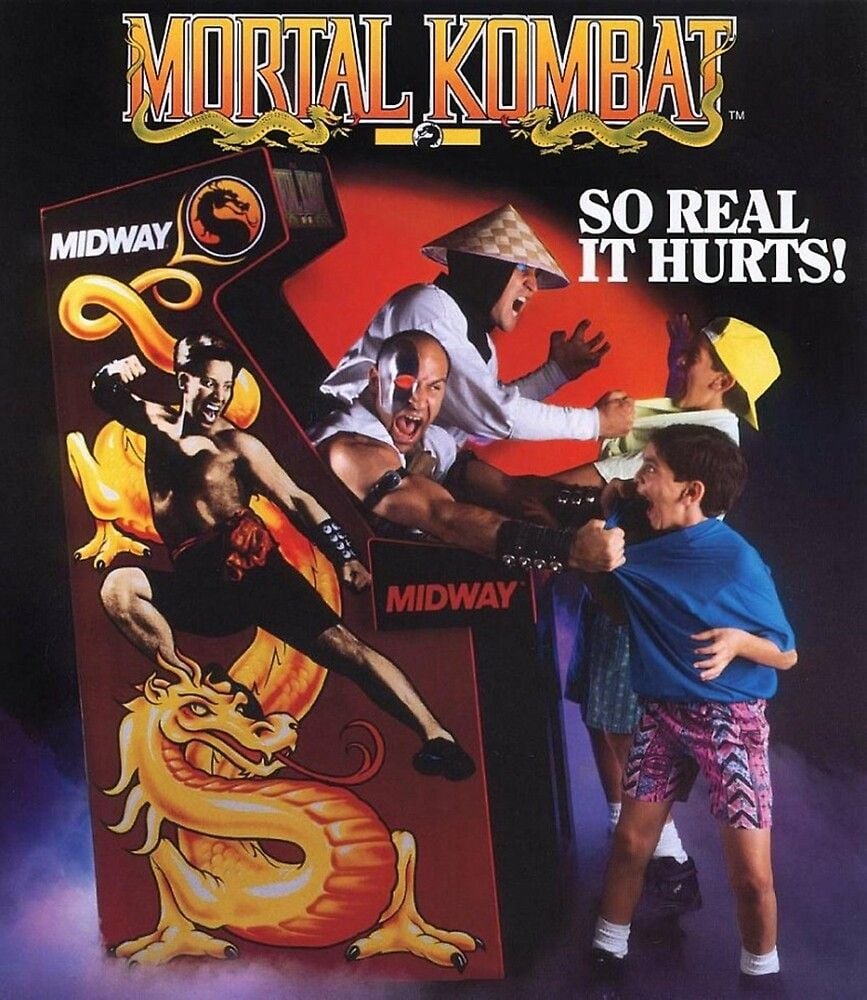Video games have grown from a niche subculture to one of the preeminent focuses of pop culture in its brief run as an entertainment medium. The first video game advertisement was for the Magnavox Odyssey in 1972 and has evolved and changed over the years to the point the original commercial feel strange by comparison.
What once was a superfluous household activity is now a multibillion-dollar industry.
Video games advertising didn’t evolve overnight. It took several different creative and even strange paths to get to where it is now. This article will review the evolution of video game advertisements and how they shaped the medium, for better or worse.
The Birth of Video Game Advertising
The first video game commercial was for Odyssey, a game console made by Magnavox. This 1972 commercial focused on how easily adaptable the console was to any television, with a theme of family-oriented fun.
These early Magnavox Odyssey commercials were fairly simple in concept, typically shifting between a happy family enthusiastically playing an Odyssey game and the narrator discussing the eleven other games available on the device, including Hockey, Tennis, Roulette, Football, and the heart-pounding action of Geography.
These commercials created an outline for video game ads that would continue for at least two decades. At its inception, video games were advertised as a way for the entire family to interact with one another from the comfort of their home.
Selling them proved difficult, as several consumers knew little about video games or how they worked during this time. There are several examples of customers seeing the commercial, not knowing about what was required, and skipping the product entirely.
Magnavox's creator, Ralph Baer, even said that some customers didn’t realize you could use the product on a non-Magnavox television. So even though the ads took special care to explain that the product was almost universally compatible with televisions, the overall mystery surrounding the new entertainment format made it a hard sell.
The Early Days (70s-80s)
A person born after the turn of the millennium would be perplexed seeing some of the older video game commercials. Unlike modern commercials, the focus was more on the consumer than the game itself. Kids are laughing and leaning into a rousing battle of pong while a narrator briefly discusses what is possible with the game while heavily hammering home how much fun you can have.
Commercials typically cut between enthused children or teenagers (depending on the game demographic) and minimal gameplay. Commercials would feature a narrator discussing a few things you could experience, then finish with a disclaimer that the console must be bought separately.
Magnavox created a format that was followed loosely by most companies. As video games were still widely unknown, it was essential that you explained what they were, that they were for children, that they needed a console, and that consumers could participate. For some ad examples over time, check out Demons to Diamonds, The Atari 2600, or even Vectrex.

Another problem was that several kids in the early days of home console gaming preferred spending time at the arcade with their friends instead of pumping hours into pong in their living rooms. In fact, by the start of the 1980s, it looked as if arcade profits would double that of home consoles.
Then the crash happened.
The Video Game Crash of 1983
While video games and arcade games were pulling in billions, consumer sentiment was changing for the worse. The market was filled to the brim with consoles, bad games, and entirely too many options. What resulted was the video game crash, which several people thought would end the fad forever.
Some consumers switched to personal computers, while others abandoned video games entirely. Several video game and console developers went under, unable to survive the economic hardships of a vastly diminished consumer base.
By 1985, revenue for home consoles was down by 97 percent. Arcades were faring a bit better, though still bleeding profit in their own right. This moment is widely considered the start of the end for arcades, which have never found the magic they had in the early 80s.
The only thing to got the video game industry out of this horrific slump was the release of the Nintendo Entertainment System (NES). The NES offered higher-quality games with better graphics, gameplay, and fun.
Nintendo did not reinvent the wheel with its TV commercials - it didn’t have to. By utilizing the tried and true advertisement format pioneered by Magnavox and others, Nintendo could show the cutting-edge advantages of their system along with fun new accessories, like the NES Zapper, R.O.B., and the NES Advantage.
Fearing the stigma video games had acquired post-1983, Nintendo pushed its new system as an interactive entertainment device rather than a video game console. The plan worked spectacularly, and the NES is now one of the most successful consoles ever, potentially saving the industry it would continue to help build.
The Console Years (1985 - 2010)
The 1990s
Things did not appear all that different for video game advertising after the release of the Nintendo Entertainment System, but the industry had changed. Commercials for individual video games had become more common, and despite the release of several consoles, it was clear that Nintendo had an iron grip on the emerging phenomenon.
They continued this success with genuine ingenuity and a clear idea of what consumers wanted. The best example was the inception of the Game Boy, which allowed people to play games with only a charming electric brick and a couple of AA batteries. Advertisements reflected this perfectly, and despite some controversial reviews for its limited performance ability, the Game Boy became one of the most successful products in video game history.
While names like Nintendo and Sega became household names, marketing had grown from television to monthly video game magazines. The hobby became a culture as the Super Nintendo and Sega Genesis were released. Kids had rooms filled with Mario posters, Nintendo Life magazines, and big, bulky televisions surrounded by boxes of cartridges and consoles.
Advertisements began focusing more heavily on which exclusive games a console had. You weren't going to find Super Mario on the Sega Genesis, and you weren't going to find Sonic on the Super Nintendo.
The video game ads of the 90s are a fever dream of rock music, trendy outfits, and cool teenagers ignoring competing products. Outside of the historical importance of some of these ads, they are some of the more entertaining ads this writer has ever seen. One of the best that comes to mind is the classic - and ingenious - "Genesis Does What Nintendon’t" campaign.
These commercials had two very effective results. The first is that they created several very successful exclusive franchises. The second is that they cultivated brand loyalty among their consumer base. It didn’t matter that a new Sega video game was being released; you only played the Super Nintendo.
This era also introduced several celebrity appearances and an increase in licensed IP. Quite a bit of cash went into marketing games for 007, WWE, X-men, Spider-Man, and more. These already-established franchises helped bring in other consumers from similar demographics, such as comics, cartoons, and action films. By the end of the century, it was clear that the industry was here to stay. But what was next for its marketing?
2000 - 2010
While the games were far different than they are now, the advertising in the early 2000s was the start of a formula that video game marketers still use today. The focus on the player was lessened, with more emphasis on gameplay. The advertisements started becoming genuine trailers.
Final Fantasy IX, Silent Hill 2, and Halo are notable examples of brands that produced gameplay-only TV commercials. Gameplay commercials not only helped consumers get a better look at the graphics but also provided a better idea of what the game was actually about.
At the same time, the internet was growing exponentially with game review sites, fan forums, and video streaming (anyone remember GameTrailers?). The PC was a strong contender in the video game market in its own right, and it only added to the trend's rising popularity. Magazine racks were filled with ad-packed video game magazines, and GameStops and EB Games were popping up everywhere.

Because of this, advertising campaigns had to ensure they caught their audience's attention. The target demographic was quickly growing into adulthood and the number of games they had to choose from made it hard to stand out. By the early 2000s, the industry was entering its 6th console generation, with leading consoles from Nintendo, Sony, and now Microsoft.
In the mid-2000s, Nintendo - never to be outdone - launched one of the most successful consoles of all time with the Wii. The advertisements were brilliant, showing a cheaper system that could be enjoyed and played by the whole family while offering a collection of great franchises and games to go with it. The design was unique, innovative, and simple enough that even people who had never played a video game could still school you in Wii Sports.
The decade's end would reveal hint to the future as mobile games like Doodle Jump and Fruit Ninja became tremendous successes.
Modern Age (2010 - Present)
The video game advertising of today looks nothing like the days of Atari. Games are now being advertised in other games, console menus, between YouTube videos, during YouTube videos, all over webpages and social networks, and much, much more. Mobile games now see double the profit of both PC and console gaming. In 2015, Game of War shocked the industry with a Super Bowl commercial.
Because of this, it is also the most heavily advertised form of gaming. But a lot of this is due to the data-driven world of user acquisition. 20 years ago you'd spend hundreds of thousands on a single TV spot. Now, a video game ad agency like Airtraffic can produce hundreds of ads for a fraction of the cost.
The modern era also brings modern advertising strategies, including influencer campaigns, livestream sponsorships, push notifications, cross-promo, playable ads, UGC, and more.
Console games, such as the 2K series, are more frequently embracing in-game advertising placements. While you're getting ready for your next game against the Bucks, you might see an ad for Nike or the newest show on Amazon Prime. Although, this isn't the first time ads have been incorporated into a game.

Digital advertising is now the most effective form of advertising for video games. Not only is it the most measurable kind of advertising, it also offers the most variety and innovation when it comes to placements and formats.
Video Game advertising has gone through several outfit changes over the decades. While it once was the beloved, wacky commercials of the 90s, video game ads now permeate all corners of civilized society. Even my grandma gets mobile game ads in her news feed. And while it may seem like there's nowhere left for video game ads to appear, I'm sure the future will surprise us.






